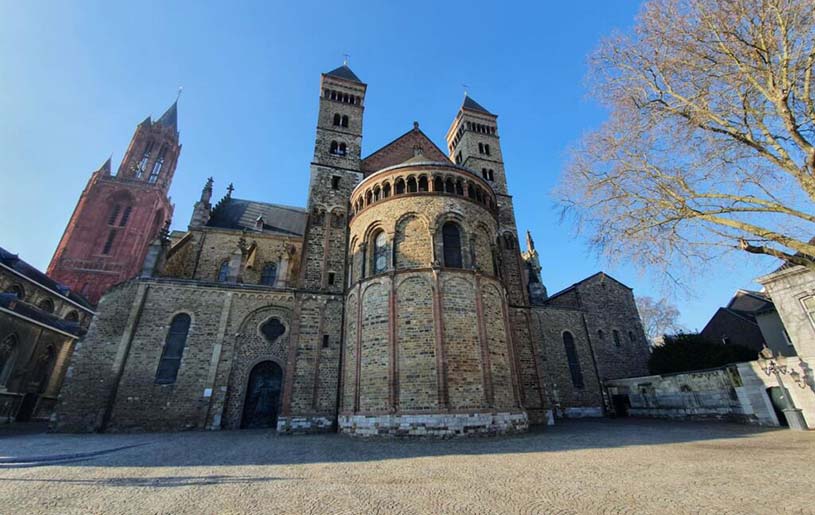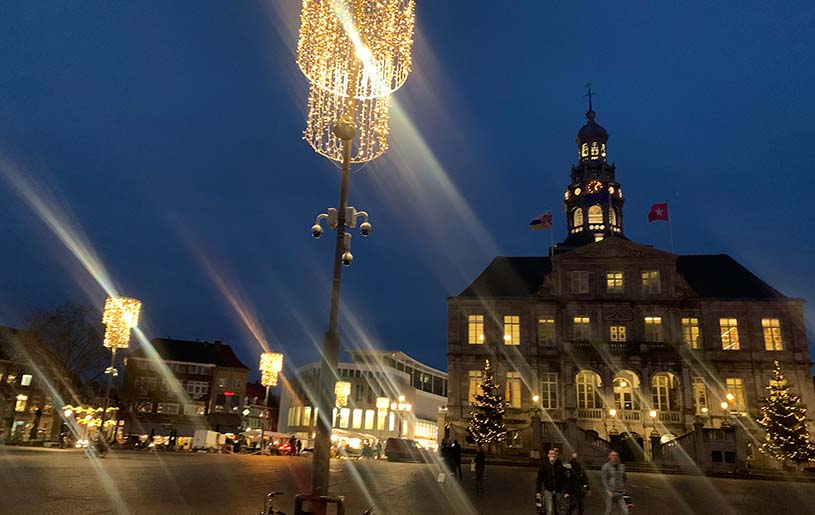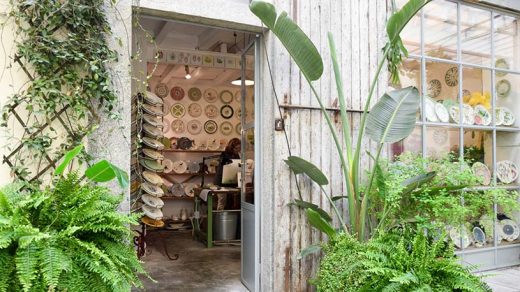In the southern part of the Netherlands, Maastricht is an enchanting city located near the borders of Belgium and Germany. This city, rich in history and culture, is a perfect blend of ancient charm and modern vibrancy. If you love history, culture, beautiful architecture, and a laid-back lifestyle, Maastricht is definitely a destination you shouldn’t miss. I’ll take you on a journey through Maastricht’s top attractions, especially focusing on its most iconic landmarks: the Maastricht Old Town, the Church of Saint Servatius, and the Meuse River.
Maastricht Old Town: A Walk Through Time
The Old Town of Maastricht is the heart of the city, filled with medieval charm and character. Walking through the cobbled streets, you’ll feel as if you’ve stepped back in time. The narrow streets are lined with charming buildings, from grand churches to quaint houses, each with its own story to tell. The blend of architectural styles is absolutely captivating, offering a unique atmosphere not found in other Dutch cities.
As I strolled through the Old Town, I couldn’t help but be drawn to the narrow alleys, picturesque squares, and ancient buildings. I was particularly taken by the Church of Saint Servatius (Basilica of Saint Servatius), one of Maastricht’s most iconic landmarks. The church’s architectural style is a fascinating mix of Romanesque and Gothic elements, and its two towering spires dominate the city skyline. Standing outside and looking up at the towering structure gave me an overwhelming sense of awe, as if I were witnessing the weight of centuries of history.
The Church of Saint Servatius: A Symbol of Faith and History
The Church of Saint Servatius in Maastricht is not only one of the oldest churches in the Netherlands, but it also serves as a powerful symbol of the city’s rich history, religious significance, and cultural heritage. Its history dates back to the 4th century, and the church has been an integral part of Maastricht’s religious landscape for over a millennium.
As I entered the church, I was immediately struck by its architectural magnificence. The Romanesque style of the church is evident in its sturdy stone walls, round arches, and the grand, barrel-vaulted ceilings. These architectural elements create a sense of permanence, as if the building itself was made to withstand the test of time. What caught my attention were the intricate carvings on the columns and the ornate stonework that adorned the walls—each detail seemed to tell a story.
One of the highlights of the church is its stunning stained-glass windows, which are masterpieces in their own right. The sunlight filtering through the colorful glass created a serene and spiritual atmosphere inside the church. The vivid reds, blues, and golds of the stained glass illuminated the interior with a warm, otherworldly glow. Each window tells a biblical story or reflects the church’s long history. These beautiful works of art capture the religious devotion and artistry of past generations.
The church is also home to a number of important artifacts, including relics and religious objects that date back centuries. Among the most significant items is the reliquary of Saint Servatius, which holds the remains of the saint. Saint Servatius is the patron saint of Maastricht, and the church has long been a site of pilgrimage for those wishing to pay homage to him. The reliquary is beautifully crafted and stands as a symbol of the church’s long association with religious practices and the spiritual life of the region.
The atmosphere within the church is incredibly peaceful and sacred. It’s not hard to feel the weight of history as you walk through the nave, with its high ceilings and thick stone columns. As I took a moment to sit in one of the pews, I felt the same sense of reverence that countless visitors and worshippers must have felt over the centuries.
What makes the Church of Saint Servatius particularly special is its role as a reflection of Maastricht’s cultural and religious heritage. The church has witnessed many historical events, from the rise of Christianity in the region to the turbulent periods of war and conflict. Its enduring presence speaks to the city’s resilience and the importance of faith throughout the ages.

Visitor Tips for the Church of Saint Servatius
- Opening Hours: The church is generally open daily to visitors, though there may be occasional closures during religious services or special events. It’s best to check the church’s website or ask at the tourist office for up-to-date information before your visit.
- Entrance Fee: While the church is free to enter for a visit, a small donation is encouraged to help with the preservation of the church’s historic structure and artifacts. There may also be a small fee to visit certain areas like the crypt or to view special exhibits.
- Guided Tours: For those interested in learning more about the history and significance of the church, a guided tour is a great option. The guides are knowledgeable and can provide deeper insights into the church’s history, the religious practices of the past, and the various architectural features. Tours are available in several languages, including English.
- Dress Code: Since the Church of Saint Servatius is still an active place of worship, it’s important to dress modestly when visiting. While there is no strict dress code, covering your shoulders and avoiding overly casual attire (like shorts or tank tops) is recommended out of respect for the sacred space.
- Photography: Photography is allowed in most areas of the church, but it’s important to be respectful of other visitors and not disturb any ongoing services. Avoid using flash in areas with delicate artifacts or stained glass, as it can cause damage over time.
- Accessibility: The church is wheelchair accessible, but due to its ancient structure, some areas may be difficult to access. If you have mobility concerns, it’s a good idea to check with the church staff for advice on the most accessible routes.
- Nearby Attractions: After visiting the church, take a walk around Vrijthof Square, where the church is located. The square is a bustling hub filled with cafes, restaurants, and shops, making it the perfect spot to relax after exploring the church. You can also visit other nearby historical landmarks like the Basilica of Our Lady or Helpoort, Maastricht’s medieval gate.
Visiting the Church of Saint Servatius is not just an architectural experience—it’s a journey through history, religion, and culture. It’s a place where you can not only admire the beauty of its design but also reflect on the centuries of stories that have unfolded within its walls.
The Meuse River: A Serene Escape Through Nature
One of the most relaxing activities in Maastricht is to take a leisurely walk along the Meuse River or enjoy a boat ride along its tranquil waters. The Meuse runs through the city, adding a vibrant yet peaceful touch to Maastricht’s charm. On a sunny day, the river sparkles, and the reflections of the surrounding buildings on its surface create a breathtaking sight. I took the opportunity to walk along the riverbanks, soaking in the peaceful beauty of the scene.
I also paused at one of the charming riverside cafés, enjoying a warm drink while watching boats pass by. The atmosphere was incredibly calming, with the sound of gentle waves lapping against the shore and the cool breeze on my face. The Meuse River provides a picturesque backdrop for Maastricht and is undoubtedly one of the most scenic aspects of the city.
Exploring Maastricht’s Allure

Maastricht is not just an ancient city but also a lively and modern one. The city offers an array of trendy cafés, bars, and boutique shops that attract visitors from all over the world. I particularly enjoyed wandering the Old Town’s narrow streets, where I discovered unique boutiques and restaurants. Maastricht is renowned for its local products, and I made sure to try some Dutch specialties, including traditional Dutch cookies, cheeses, and delectable desserts.
One of the highlights of my visit was sampling Maastricht chocolates, a local delicacy known for its rich, velvety taste. It was an unforgettable treat that I would highly recommend to anyone visiting the city. If you’re an art lover, there are also several museums to explore, such as the Bonnefanten Museum, which showcases works by both Dutch and international artists, with a focus on modern and contemporary art.
Maastricht is undoubtedly one of the most historically charming cities in the Netherlands, and its blend of rich cultural heritage, stunning architecture, and scenic beauty makes it a must-visit destination. From the medieval streets of the Old Town to the tranquil beauty of the Meuse River, the city offers a perfect mix of history, culture, and relaxation.
If you plan to visit Maastricht, make sure to book your accommodation and transportation in advance, especially during the peak tourist seasons. You can easily reach Maastricht by train from Amsterdam or other major cities, with a journey time of around 2 hours. Whether you are traveling solo or with friends, Maastricht offers the perfect setting to explore the Netherlands’ rich history and culture, and it will undoubtedly leave you with unforgettable memories.






